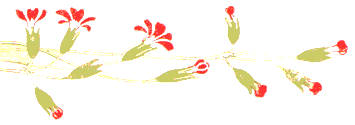

During both the waking and the dream stages, as well as during all the process of mental spinning and weaving of colourful pictures by the imagination, the Chitta has to be watched and trained. It must be made to flow, single pointed and steady, like water from a sluice, towards Brahmam and Brahmam only. That is real Dhaarana.
Jnana that flows in a single direction is Dhyana. I have already described its various characteristics in previous articles. Dhyanam, in short, is the uninterrupted dwelling of the consciousness in Jnana, the consciousness itself becoming thereby Jnanaswarupa. All this is Brahmam. The ocean of Amritha is everywhere Amritha. Whether in the well, or in the tank or in the river, ocean, water is water. So too, when all is Brahmam, all is the same substance appearing under a multiplicity of names and forms. Akasa is there, inside the pot as well as outside it, and it is the same Akasa, though it appears as two, interior Akasa and the exterior Akasa! The Brahmam, too, appearing as various bodies with their own individual characteristics, is One and one Only. Like Akasa inside the pot as well as outside the pot, it is One. Experiencing that One and only Brahmam, avoiding all feelings of difference and distinction, that is the sign of Dhyana, the essence of the Dhyana experience, however much individuals may vary.
When Form is ignored and Meaning alone is felt, that is Samadhi. This is the opinion of Pathanjali. This can be explained in another manner also. When the person engaged in Dhyana, forgets both himself and the fact that he is engaged in Dhyana, then it becomes Samadhi. That is to say, when he is merged in the thing he meditates on, he enters into the stage called Samadhi. Dhyana fulfils itself, becomes complete, in Samadhi. Dhyana strives, proceeds through effort, but, Samadhi comes effortlessly. It is the culmination of the eight-fold discipline, the Ash-tanga.